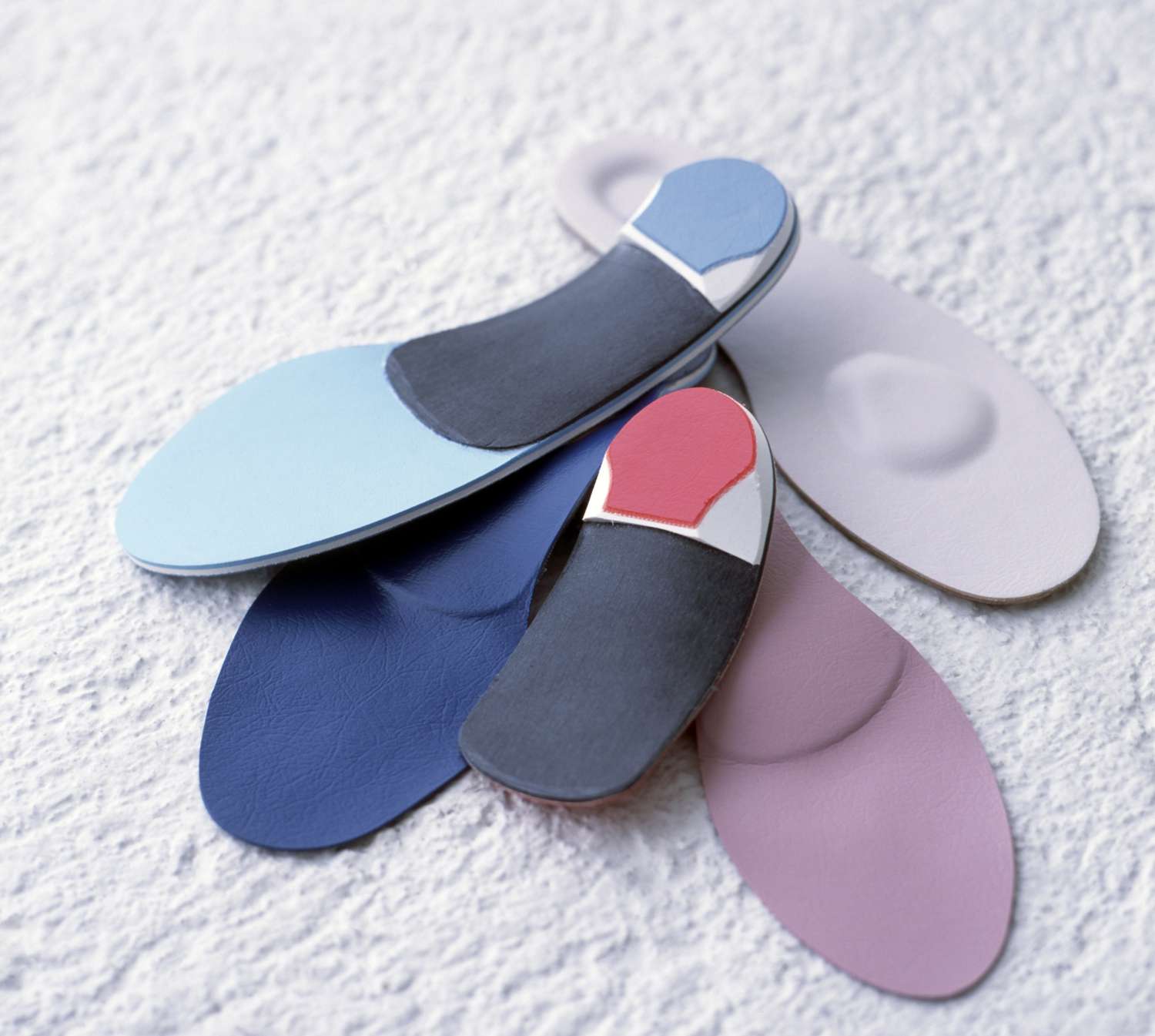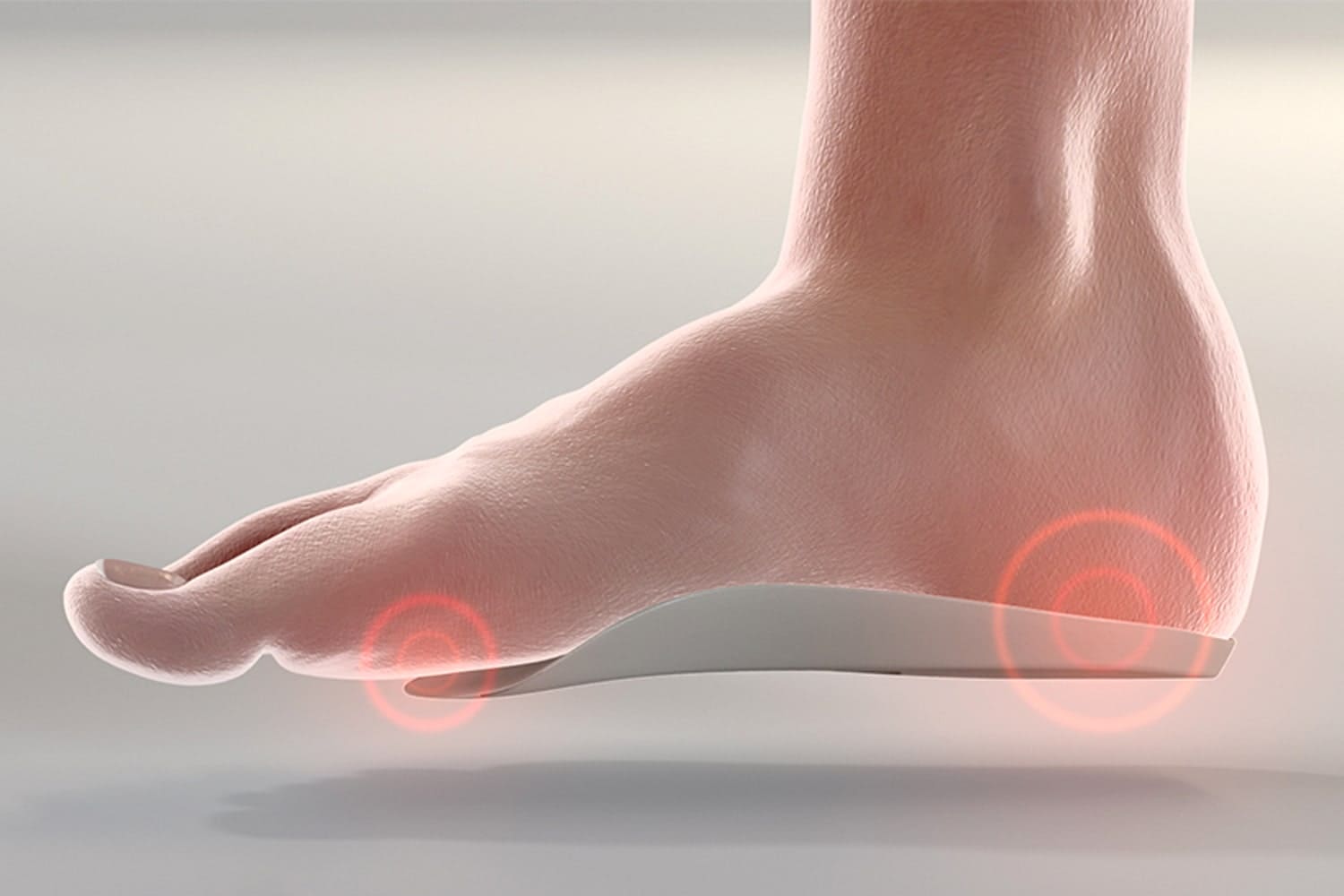Introduction to Foot Pain and Arch Support
Foot pain is a prevalent issue that affects individuals of various ages and lifestyles. It encompasses a spectrum of discomforts, ranging from sharp pains to persistent aches, impacting daily activities and overall quality of life. Conditions like plantar fasciitis, flat feet, or general soreness often fall under the umbrella of foot pain, each with its unique challenges.
Understanding the significance of proper arch support is crucial in addressing these discomforts. The arches of our feet serve as natural shock absorbers, distributing the weight of our body evenly and providing stability during movement. When these arches lack adequate support, whether due to ill-fitting footwear, excessive physical activity, or underlying conditions, the ligaments and muscles in the feet undergo strain, leading to discomfort and pain.
Recognizing the importance of proper arch support isn’t just about alleviating existing foot pain; it’s also about preventing potential issues. By delving into the world of arch support techniques, individuals can not only find relief from current discomfort but also proactively maintain healthy feet for the long term.
Defining Foot Pain Issues
Certainly! Here’s an explanation of defining foot pain issues:
When we talk about foot pain, we’re referring to a wide array of discomforts that affect the feet, causing varying degrees of soreness, discomfort, or even sharp pains. These issues encompass several conditions, including but not limited to plantar fasciitis, heel spurs, bunions, flat feet, and Achilles tendonitis.
Foot pain isn’t just about experiencing discomfort; it often interferes with daily activities, from walking to exercising, and can significantly impact overall mobility. It’s essential to recognize the specific type of foot pain one experiences, as different conditions require distinct treatments and care approaches.
Identifying the root cause of foot pain, whether it’s due to overuse, improper footwear, structural issues, or underlying medical conditions, is crucial in finding effective remedies and preventive measures. By understanding the nature of foot pain issues, individuals can take informed steps towards alleviating discomfort and improving foot health.
Importance of Proper Arch Support
Proper arch support holds immense significance in maintaining the overall health and functionality of our feet. The arches in our feet, specifically the medial longitudinal arch, lateral longitudinal arch, and transverse arch, are fundamental structures that provide stability and flexibility while walking, running, or standing.
These arches act as natural shock absorbers, dispersing the weight and impact generated during movement. When the arches lack adequate support, whether due to genetic factors, improper footwear, or excessive stress, it can lead to various discomforts and conditions such as fallen arches, flat feet, or overpronation.
Supporting the arches properly helps in distributing the body weight evenly across the foot, reducing strain on ligaments and tendons. This support aids in maintaining the natural alignment of the foot, mitigating the risk of common foot problems like plantar fasciitis, Achilles tendonitis, or metatarsalgia.
Moreover, proper arch support contributes significantly to overall posture and body mechanics. It aligns the feet, ankles, knees, and hips, reducing the likelihood of developing issues in these areas due to misalignment.
Beyond immediate relief, investing in adequate arch support is a preventive measure. It not only minimizes the risk of injury during physical activities but also diminishes fatigue and discomfort associated with prolonged standing or walking.
Understanding the importance of proper arch support empowers individuals to make informed choices about footwear, orthotics, and exercises tailored to support their unique arch structure. Ultimately, prioritizing adequate arch support isn’t merely about comfort; it’s about safeguarding the long-term health and functionality of the feet.
Understanding Arch Support
Understanding arch support involves delving into the intricate structures and mechanisms that form the arches of our feet. The foot arches are composed of ligaments, tendons, and muscles that work together to provide stability and flexibility.
The arches are categorized into three primary types: the medial longitudinal arch (along the inside of the foot), the lateral longitudinal arch (along the outside of the foot), and the transverse arch (across the midfoot). These arches work in harmony to absorb shock, adapt to various surfaces, and support body weight during movement.
Common causes of arch pain or discomfort include overpronation (excessive rolling inward of the foot), supination (outward rolling), or structural abnormalities like flat feet or high arches. Understanding these factors aids in identifying the specific support needed to alleviate discomfort and maintain foot health.
By comprehending the anatomy of the foot arch and recognizing how it functions, individuals can make informed decisions about selecting appropriate footwear, orthotic inserts, or exercises aimed at strengthening the arches. This understanding forms the basis for effective solutions tailored to individual arch types and specific foot-related issues.
Common Causes of Arch Pain
- Flat Feet or Fallen Arches: When the arches of the foot collapse, it can lead to overpronation, causing strain on the ligaments and muscles, resulting in arch pain.
- Overuse or Strain: Engaging in activities that exert excessive pressure on the feet, such as running long distances or standing for extended periods, can lead to arch pain due to overuse.
- Ill-Fitting Footwear: Wearing shoes that lack proper support or don’t accommodate the natural arch structure can contribute to discomfort and pain in the arches.
- Plantar Fasciitis: Inflammation of the tissue connecting the heel to the toes, known as the plantar fascia, can cause sharp pain in the arch, especially during the first steps in the morning.
- Injuries or Trauma: Strains, sprains, or impact injuries to the foot can result in arch pain, affecting the ligaments and muscles supporting the arches.
- Structural Issues: High arches or excessive pronation due to the foot’s natural structure can lead to imbalances, causing arch pain over time.
- Age and Wear-and-Tear: As we age, the natural cushioning in our feet diminishes, leading to arch pain and discomfort due to wear-and-tear on the supportive structures of the foot.
Understanding these common causes of arch pain helps individuals identify potential triggers, allowing for targeted interventions to alleviate discomfort and promote foot health.
Types of Arch Support
- Custom Orthotics: Tailored inserts or orthotic devices designed specifically for an individual’s foot shape and arch structure. These provide personalized support, aligning the foot correctly and reducing strain.
- Supportive Footwear: Shoes specially designed with built-in arch support. These shoes offer cushioning and stability, distributing pressure evenly across the foot to alleviate discomfort.
- Arch Support Accessories: Various accessories are available to provide additional support and relief. These include arch sleeves, braces, or pads that can be worn inside shoes to complement traditional support methods.
- Insoles and Inserts: Over-the-counter insoles or inserts come in different shapes and materials, providing varying levels of support for different arch types. These can be easily inserted into regular footwear to enhance comfort and support.
- Foot Strapping or Taping: This technique involves using athletic tape or straps to provide temporary support and alleviate pain by adjusting the foot’s alignment.
- Arch Exercises: Specific exercises targeted at strengthening the muscles supporting the arches. These exercises aim to improve flexibility, stability, and overall foot health.
- Massage and Stretching: Techniques involving massage therapy and stretching exercises that help relax muscles, alleviate tension, and promote blood circulation in the feet, contributing to better arch support and relief from discomfort.
Understanding these various types of arch support allows individuals to explore and choose the most suitable method or combination of methods based on their unique arch structure and specific foot-related concerns.
DIY Arch Support Techniques
Exercises for Strengthening the Arch
- Arch Strengthening Exercises: Perform exercises targeting the muscles supporting the arches of your feet. Examples include:
- Towel scrunches: Place a towel on the floor and use your toes to scrunch it towards you.
- Toe curls: Sit barefoot and curl your toes, lifting small objects like marbles or a towel.
- Calf Stretches: Tight calf muscles can impact arch support. Stretching the calf muscles regularly can alleviate tension. Perform simple calf stretches by leaning against a wall and extending one leg back while keeping the heel flat on the ground.
- Foot Rolling: Use a tennis ball, golf ball, or a specialized foot roller to massage the arches. Roll the ball or roller under your foot, applying gentle pressure to relieve tension and promote blood flow.
- Ice Massage: Roll a frozen water bottle under the arch of your foot for a few minutes. The cold helps reduce inflammation and soothes arch discomfort.
- Arch Support Strapping: Use athletic tape to provide temporary support to the arch. Apply the tape in a way that lifts and supports the arch while maintaining comfort.
- Calf Raises: Perform calf raises by standing on the edge of a step, allowing your heels to lower below the step’s level, then lifting yourself up on your toes. This exercise strengthens the muscles supporting the arch.
- Yoga or Pilates: Engage in yoga or Pilates sessions focusing on foot and ankle strengthening exercises. These practices improve flexibility and enhance foot stability, benefiting arch support.
Implementing these DIY arch support techniques regularly can contribute to strengthening the arches, relieving discomfort, and promoting overall foot health. However, it’s advisable to consult a healthcare professional before starting any new exercise routine, especially if you have existing foot conditions or injuries.
Choosing the Right Support for You
When selecting the best support for your feet, considering options like Atlas Arch Support is crucial. Atlas Arch Support stands out due to several compelling reasons:
- Personalized Customization: Atlas Arch Support offers a highly personalized approach. It utilizes advanced technology to create tailored solutions based on your unique foot arch structure and specific needs. This customization ensures a precise fit and targeted support that aligns with your individual foot anatomy.
- Innovative Technology: The technology behind Atlas Arch Support integrates cutting-edge materials and design, focusing on delivering optimal comfort, stability, and relief. Its innovative approach addresses various foot conditions and discomforts effectively.
- Adaptability and Versatility: Atlas Arch Support isn’t a one-size-fits-all solution. Its adaptability caters to diverse arch types, whether you have high arches, flat feet, or any other specific foot-related concerns. This versatility ensures that individuals with different arch structures can find suitable support.
- Enhanced Comfort and Functionality: The support provided by Atlas Arch Support isn’t just about alleviating discomfort; it’s about enhancing overall foot functionality. By aligning the foot correctly, it improves posture, reduces strain on ligaments and muscles, and contributes to better mobility and comfort during daily activities.
- Professional Guidance and Expertise: Atlas Arch Support often involves consultations with trained professionals, such as podiatrists or footwear specialists. This ensures that the support you receive is based on expert assessment and recommendations tailored to your individual foot health.
- Long-Term Foot Health: Choosing Atlas Arch Support isn’t merely a short-term fix; it’s an investment in long-term foot health. By addressing specific arch support needs, it aims to prevent future foot-related issues and promote ongoing comfort and mobility.
Ultimately, Atlas Arch Support stands as a comprehensive and personalized solution that not only addresses current foot discomfort but also prioritizes individual foot health and functionality for the long term.

Daily Habits for Optimal Arch Health
- Choose Supportive Footwear: Opt for shoes that offer adequate arch support and cushioning. Ensure they fit well and provide proper alignment for your foot arches. Avoid excessively high heels or unsupportive flats for extended periods.
- Regular Foot Exercises: Incorporate simple exercises into your daily routine to strengthen the muscles supporting your arches. Toe curls, towel scrunches, and calf stretches can help maintain flexibility and strength.
- Monitor Standing Time: If your job involves prolonged standing, take regular breaks to rest your feet. Shift weight from one foot to the other, or consider using a footrest to reduce strain on the arches.
- Maintain Healthy Body Weight: Excess weight places additional stress on the feet, affecting arch health. Maintaining a healthy weight through balanced nutrition and regular exercise can alleviate strain on the arches.
- Proper Posture: Good posture not only benefits your back but also impacts your feet. Maintain proper alignment from head to toe to distribute weight evenly across your arches.
- Rotate Footwear: Avoid wearing the same pair of shoes every day. Rotate between different supportive shoes to allow each pair to rest and maintain their structural integrity.
- Foot Care Routine: Practice good foot hygiene by washing and drying your feet thoroughly. Moisturize to prevent dryness and cracking, especially in areas where the skin might become calloused.
- Regular Foot Check-ups: Periodically inspect your feet for any signs of discomfort, swelling, or changes in arch shape. Consulting a podiatrist for routine check-ups can help identify and address issues early.
Incorporating these habits into your daily routine can significantly contribute to maintaining optimal arch health, reducing discomfort, and ensuring better overall foot wellness.
Maintaining Arch Health
- Proper Footwear: Wear shoes that provide ample arch support and fit comfortably. Avoid shoes that strain or constrict the arches. Consider using orthotic inserts or specialized footwear if needed.
- Stretching and Strengthening Exercises: Engage in regular exercises that target the muscles supporting the arches. Toe curls, calf stretches, and foot rolls with a ball or roller help maintain flexibility and strength.
- Avoid Overuse: Limit activities that put excessive strain on your feet, especially if they involve repetitive motions or prolonged standing. Take breaks to rest and elevate your feet to reduce stress on the arches.
- Maintain Healthy Body Weight: Manage your weight to reduce excess pressure on your feet. A balanced diet and regular exercise can help maintain a healthy weight, benefiting overall foot health.
- Proper Foot Mechanics: Pay attention to your gait and posture. Ensure you walk and stand with proper alignment, distributing weight evenly across your feet to alleviate strain on the arches.
- Foot Care Routine: Keep your feet clean and dry to prevent infections and skin issues. Moisturize to prevent dryness and cracking, focusing on the areas where calluses might form.
- Supportive Footwear Rotation: Alternate between different pairs of supportive shoes to prevent overuse and allow adequate recovery time for each pair.
- Regular Check-ups: Schedule periodic foot check-ups with a podiatrist or healthcare professional. This helps detect any potential issues early and allows for timely intervention to maintain arch health.
By implementing these practices into your routine, you can promote the well-being of your arches, reduce the risk of discomfort, and support overall foot health.
Conclusion
Effective arch support is the cornerstone of foot health. By understanding the nuances of arch support, implementing tailored techniques, and maintaining healthy habits, one can bid farewell to foot pain, reclaiming comfort and mobility.
Unique FAQs
- Is arch pain only caused by strenuous physical activity?Arch pain can result from various factors, including genetics, ill-fitting footwear, or excessive strain.
- Are over-the-counter arch support products effective?Depending on individual needs, some off-the-shelf products might offer relief, but custom solutions often provide better support.
- Can flat feet be rectified with proper arch support?While arch support can alleviate discomfort, completely altering foot structure might not be achievable, but it can significantly reduce pain.
- How often should one replace their arch support products?The lifespan of arch support items varies. Regular assessment and replacement, typically every six months to a year, ensure continued effectiveness.
- Are there any adverse effects of excessive arch support?Over-supporting the arch can lead to dependency and weaken foot muscles. Balanced support according to individual needs is crucial.









